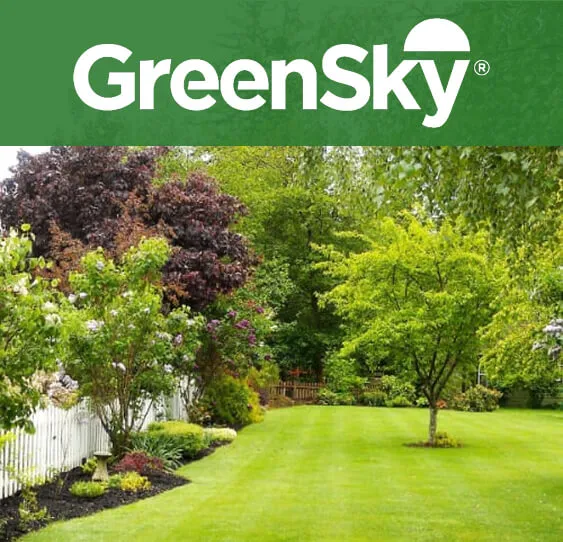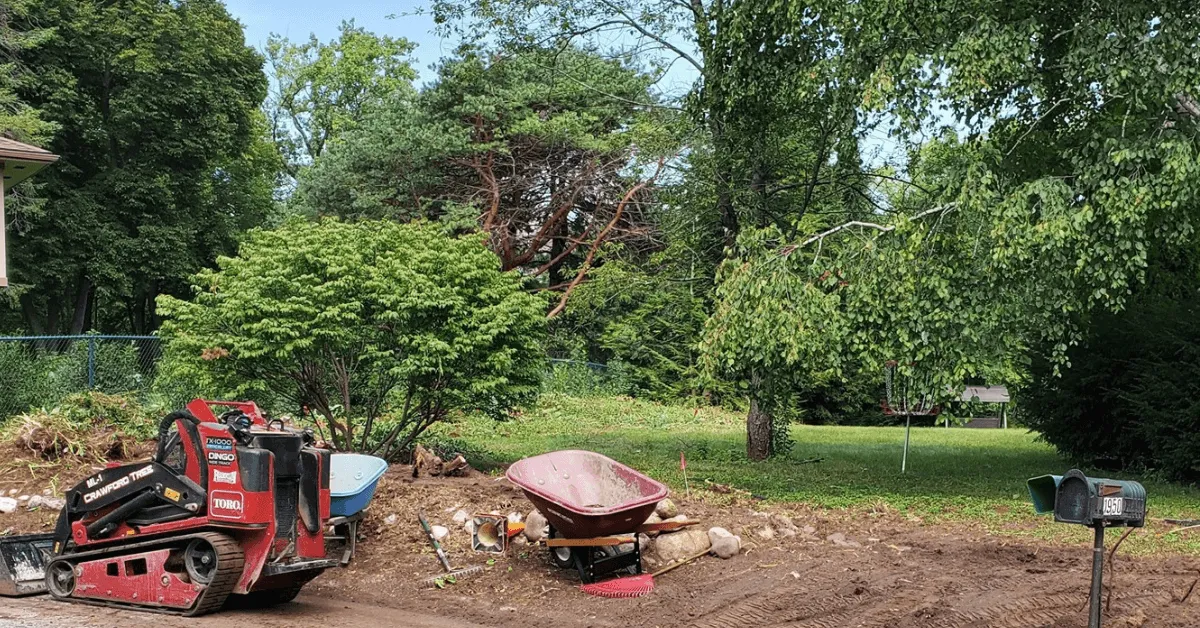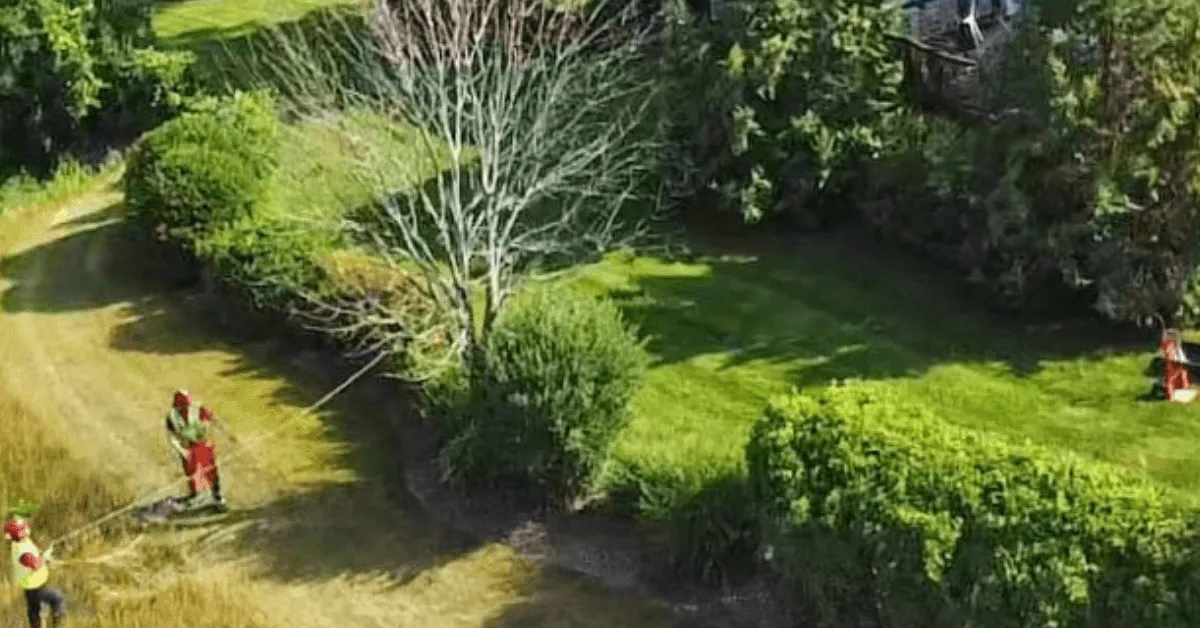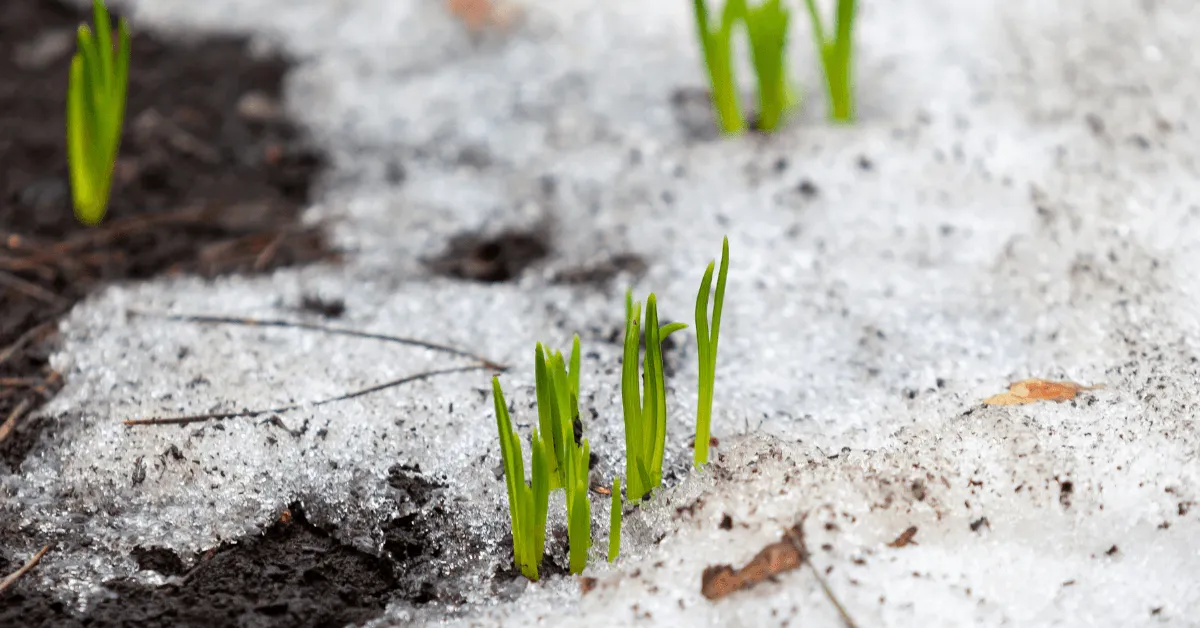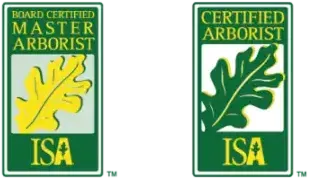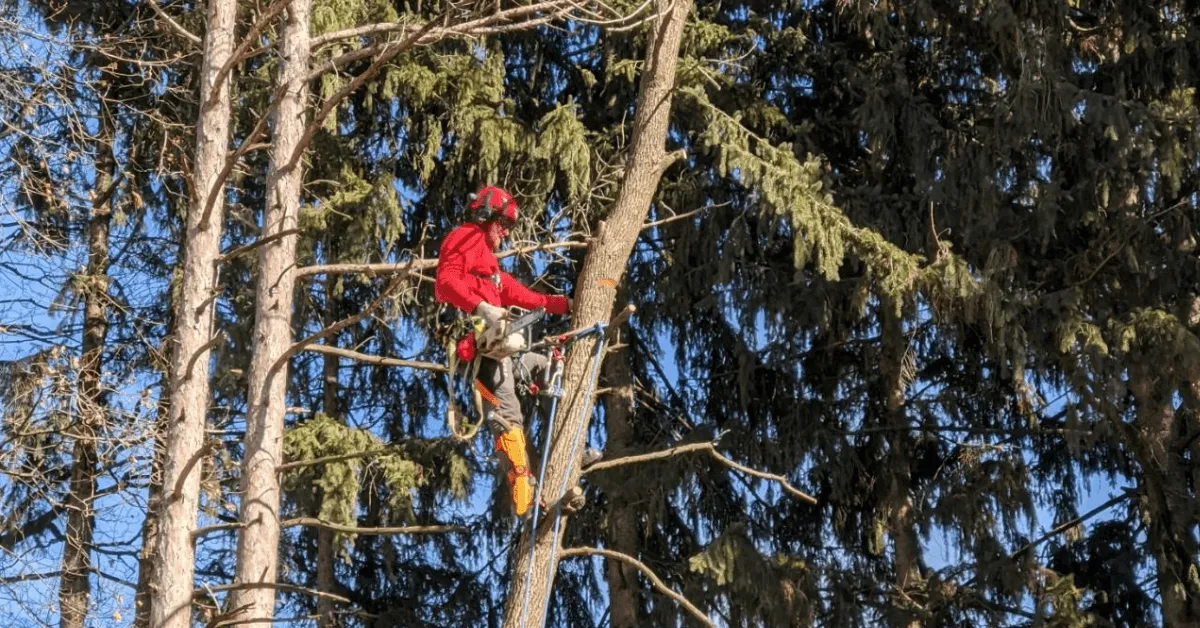
October 20, 2025
A healthy tree can transform a yard with shade, color, and beauty, yet disease can quietly undermine that strength long before homeowners notice. Acting early can save thousands in removal and replacement costs while protecting families and property. Trouble often starts small: a patch of leaves turning dull, a branch that refuses to leaf out, bark that suddenly darkens after a wet spring. These subtle signals may be the beginning of much bigger problems. Recognizing them early helps Milwaukee area homeowners safeguard valuable trees, keep landscapes thriving, and maintain safe, welcoming yards in communities from Wauwatosa to Mequon, Bayside, and Fox Point.
Understanding Tree Disease Development
Tree diseases develop gradually, often beginning with subtle changes that many homeowners overlook. Fungal, bacterial, and viral pathogens typically attack weakened or stressed trees first, taking advantage of compromised immune systems. Environmental factors like poor drainage, soil compaction, and drought stress create ideal conditions for disease development.
Most tree diseases follow predictable patterns, starting with localized infections before spreading throughout the tree or to nearby plants. Early stages may show minimal visible symptoms, making regular inspection critical for successful intervention. By the time obvious symptoms appear, diseases may have already caused significant internal damage.
Wisconsin trees face specific disease pressures due to the region’s climate and common tree species. Cool, moist spring conditions favor fungal infections, while summer drought stress makes trees vulnerable to various pathogens. Clay-heavy soils in Milwaukee County add further stress, increasing susceptibility to root and trunk diseases.
Key Early Warning Signs to Monitor
Leaf Changes and Discoloration
Unusual leaf symptoms often provide the first indication of developing disease problems. Healthy leaves maintain consistent color and shape throughout the growing season, so any deviation warrants closer examination.
- Spot Development: Small spots with irregular borders frequently indicate fungal infections. These spots may start as yellow or light green areas before turning brown or black. Multiple spots can merge to form larger blotches, eventually causing leaf death and premature drop.
- Color Changes: Yellowing leaves outside of fall season suggests potential problems. Bronze, tan, or dull green coloration, especially when accompanied by wilting, may indicate vascular diseases that disrupt water movement. Red or purple discoloration can signal anthracnose or other Wisconsin tree diseases.
- Texture Abnormalities: Leaves showing unusual curling, puckering, or blistering often indicate specific fungal infections. Powdery white coatings suggest powdery mildew, while fuzzy growth on leaf surfaces may indicate other fungal problems.
Bark and Trunk Issues
Tree bark serves as the first line of defense against disease, so changes in bark appearance provide important early warning signals.
- Cracking and Peeling: While minor bark changes occur naturally, significant cracking, peeling, or splitting may indicate internal problems. Vertical bark splits can result from disease-related stress or secondary infections following initial damage.
- Discoloration and Staining: Dark streaks, unusual staining, or color changes in bark often indicate bacterial or fungal infections. Tannish ooze or black staining around wounds suggests active disease processes requiring attention.
- Cankers and Wounds: Sunken, discolored areas on bark (cankers) indicate localized infections that can spread rapidly if left untreated. These areas may ooze sap or develop fuzzy fungal growth over time.
Branch and Crown Symptoms
Changes in tree branching patterns and overall crown appearance often signal the development of disease problems before other symptoms become apparent.
- Dead or Dying Branches: Branches that fail to leaf out in spring or show premature browning during the growing season indicate potential disease issues. Dead branches scattered throughout the crown suggest systemic problems requiring professional evaluation.
- Thinning Canopy: Gradual reduction in leaf density, especially in upper branches, often indicates root or vascular system problems. This symptom develops slowly, making it easy to overlook until significant damage occurs.
- Unusual Growth Patterns: Excessive sprouting along the trunk (epicormic growth) or unusual branching patterns may indicate stress responses to disease or other problems.
Wisconsin-Specific Disease Concerns
Emerald Ash Borer Detection
Emerald Ash Borer represents a critical threat to Wisconsin ash trees, requiring specific monitoring approaches for early detection.
- Woodpecker Activity: Unusual woodpecker damage, called flecking, often provides the earliest indication of EAB infestation. Woodpeckers remove outer bark to access larvae feeding beneath, creating distinctive pecking patterns that start high in the tree and progress downward as infestations worsen.
- Crown Symptoms: Thinning in upper branches, especially when accompanied by excessive sprouting along the trunk, suggests possible EAB activity. These symptoms typically appear 2 to 3 years after initial infestation, making early detection challenging but critical for treatment success.
- Physical Signs: D-shaped exit holes (approximately 1/8 inch diameter) and S-shaped galleries under bark provide definitive evidence of EAB presence. However, these signs appear late in the infestation process, limiting treatment options.
Common Fungal Diseases
Wisconsin’s climate creates ideal conditions for several fungal diseases that affect popular landscape trees.
Anthracnose
- Trees affected: ash, maple, oak, sycamore, walnut
- Early sign: brown spots along leaf veins
- Risk: premature leaf drop, weakened canopy
Oak Wilt
- Trees affected: red oaks (rapid decline), white oaks (slower decline)
- Early sign: bronze or dull green leaves wilting in midsummer
- Risk: fatal if untreated, spreads through root grafts
Tar Spot
- Trees affected: maples
- Early sign: yellow-green leaf spots turning into black tar-like patches
- Risk: premature leaf drop, aesthetic damage
Inspection Timing and Techniques
Seasonal Monitoring Schedule
- Spring Inspections: Conduct thorough inspections during leaf emergence to identify winter damage and early disease development. Look for failed bud break, unusual growth patterns, and early leaf symptoms.
- Mid-Season Monitoring: Summer inspections focus on leaf health, bark condition, and overall tree vigor. This period allows detection of many fungal diseases before they cause severe damage.
- Fall Assessment: Late-season inspections help identify diseases that develop later in the year and assess overall tree health before dormancy. Remove and dispose of infected leaves to prevent overwintering of fungal spores.
Proper Inspection Methods
- Visual Examination: Walk completely around each tree, examining bark, leaves, and branching structure from multiple angles. Use binoculars to inspect upper branches that cannot be reached from ground level.
- Documentation: Record observations with photographs and written notes, including dates and specific symptoms observed. This documentation helps track disease progression and treatment effectiveness over time.
- Professional Consultation: Schedule regular evaluations with ISA-certified arborists who possess training and experience to identify subtle early symptoms that homeowners might miss.
Prevention Through Proper Care
Cultural Practices
- Watering Practices: Provide consistent moisture during dry periods while avoiding overwatering, which creates conditions favorable for root diseases. Deep, infrequent watering encourages strong root development and drought tolerance.
- Mulching: Apply organic mulch in a 2 to 4 inch layer around trees, keeping mulch several inches away from trunk bases. Proper mulching retains soil moisture, moderates temperature, and reduces competition from grass and weeds.
- Soil Management: Address soil compaction, drainage problems, and nutrient deficiencies that stress trees and increase disease susceptibility. Soil testing provides valuable information for developing appropriate treatment plans.
Pruning and Maintenance
- Timing: Prune during dormant seasons when disease pressure is lowest. Avoid pruning oak trees from April through September to prevent oak wilt transmission.
- Technique: Use clean, sharp tools and sterilize equipment between cuts to prevent disease spread. Remove dead, damaged, or diseased branches promptly to eliminate infection sources.
- Wound Care: Allow natural healing processes to occur rather than applying wound dressings that may trap moisture and encourage disease development.
When to Seek Professional Help
If your tree shows signs of decline such as discolored leaves, cankers, or unusual growths, it’s best to contact a certified arborist for a professional diagnosis. Experts can accurately identify the cause of disease, distinguish between similar symptoms, and recommend effective treatments. Depending on the condition, they may use fungicides, trunk injections, or soil applications to stop the spread. In addition, they can suggest long-term care strategies like improving soil health, adjusting watering practices, and reducing stress factors that make trees vulnerable. Many companies in Columbus also offer ongoing plant health care programs that include regular monitoring and preventive treatments to keep your trees healthy year-round.
Local Insight
In Milwaukee County and surrounding areas, clay-heavy soils and fluctuating rainfall create stress that can make trees more vulnerable to pathogens. Homeowners in Wauwatosa, Shorewood, Bayside, Fox Point, and Mequon often see issues with oaks and maples during humid summers, while ash trees across Germantown and Elm Grove remain at risk from Emerald Ash Borer.
Frequently Asked Questions
What are the first signs of oak wilt in Wisconsin?
Early oak wilt symptoms usually appear in midsummer. Leaves start to lose their rich green color, turning dull, bronze, or brown from the tips inward before wilting. Red oaks often decline and die within weeks once infected, while white oaks may show a slower progression over several seasons. You may also notice streaking under the bark or rapid leaf drop from the upper canopy.
How do I know if my tree has Emerald Ash Borer?
Watch for small D-shaped exit holes in the bark, thinning leaves at the top of the crown, and bark flakes caused by woodpeckers searching for larvae. As the infestation advances, you may also see new shoots or sprouts growing from the trunk or base. In Wisconsin, Emerald Ash Borer spreads quickly, so contact a certified arborist as soon as these signs appear.
When should I call an arborist for tree disease?
If more than 20 percent of your canopy looks unhealthy or if multiple trees show the same symptoms, it’s time to schedule a professional inspection. Certified arborists can confirm whether the problem is due to pests, fungal infection, or environmental stress and create a treatment plan to stop further decline.
Can Milwaukee’s soil type increase disease risk?
Yes. Much of Milwaukee County has clay-heavy soil that retains water and drains poorly. These conditions can suffocate roots, weaken trees, and promote diseases like root rot or canker fungi. Improving soil drainage or aeration is often part of an arborist’s long-term care recommendation.
Do all leaf spots indicate disease?
Not always. Some leaf spots result from nutrient deficiencies, drought stress, or temperature fluctuations, not infection. However, consistent spotting, yellow halos, or early leaf drop can indicate a fungal or bacterial disease. A professional diagnosis helps determine whether treatment or soil correction is needed.
Conclusion
Early detection of tree disease is the difference between preserving valuable trees and facing costly removals. By paying attention to subtle changes in leaves, bark, and crown health, homeowners across Milwaukee, Wauwatosa, Bayside, Fox Point, and Mequon can protect their landscapes. Consistent monitoring, seasonal inspections, and proper care reduce risks and support long-term tree health. When in doubt, professional guidance ensures accurate diagnosis and effective solutions.
Concerned about your tree’s health? Schedule a free on-site consultation with Crawford Tree & Landscape, your trusted tree service in Milwaukee, to identify problems early and protect your property’s trees year-round.


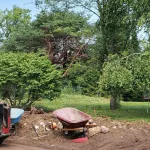
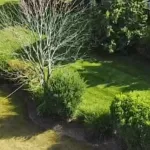
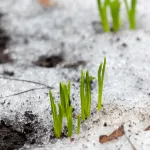


 GreenSky® and GreenSky Patient Solutions® are loan program names for certain consumer credit plans extended by participating lenders to borrowers for the purchase of goods and/or services from participating merchants/providers. Participating lenders are federally insured, federal and state chartered financial institutions providing credit without regart to age, race, color, religion, national origin, gener or familial status. GreenSky® and GreenSky Patient Solutions® are registered trademarks of GreenSky, LLC. GreenSky Serviceing, LLC services the loans on behalf of participating lenders. NMLS 1416362. GreenSky, LLC and GreenSky Servicing, LLC are subsidiaries of Goldman Sachs Bank USA. Loans originated by Goldman Sachs are issued by Goldman Sachs Bank USA, Salt Lake City Branch.
GreenSky® and GreenSky Patient Solutions® are loan program names for certain consumer credit plans extended by participating lenders to borrowers for the purchase of goods and/or services from participating merchants/providers. Participating lenders are federally insured, federal and state chartered financial institutions providing credit without regart to age, race, color, religion, national origin, gener or familial status. GreenSky® and GreenSky Patient Solutions® are registered trademarks of GreenSky, LLC. GreenSky Serviceing, LLC services the loans on behalf of participating lenders. NMLS 1416362. GreenSky, LLC and GreenSky Servicing, LLC are subsidiaries of Goldman Sachs Bank USA. Loans originated by Goldman Sachs are issued by Goldman Sachs Bank USA, Salt Lake City Branch.